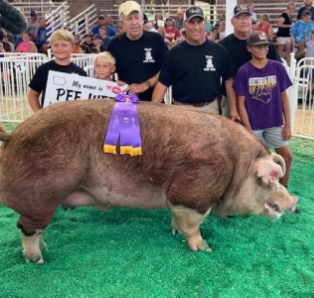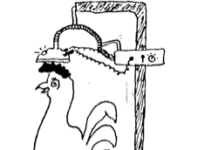Hogs were long considered farm mortgage lifters and most farmers produced some hogs.
Corporations now dominate the business produce hogs by the multi-thousands annually, so very few farmers raise hogs.
When farmers did have sows to raise pigs to grow into market hogs there was strong demand for breeding boars. Purebred seedstock producers specialized in raising and marketing quality boars with breed preference varying from farm to farm.
Almost unheard about today, among common hog breeds were Duroc, Hampshire, Chester White, Poland China, Spots, Landrace and more. Generally, breeds were crossed with each other to increase efficiency for pounds of gain
There have been other transitions within the swine industry as well with market hog weights going up through the decades. While a 220-pound butcher hog sold for top price days gone by, now hogs weighing 300-pounds are not uncommon.
Spring pig prospect shows remain popular, but county fair hog entries are lower, and state purebred hog shows are smaller.
One hog competition never heard much about has been an annual highlight for one state.
That is the Iowa State Fair’s Big Boar Contest. While interest in it has also declined, there is still a certain enthusiasm among limited hog men.
Usually attracting a dozen boar entries, there were only two this year, according to the swine superintendent Ernie Barnes.
And the winner was Pee-Wee tipping the scales at 1,300 pounds, well ahead of Purdy Boy’s 1,156 pounds. Both boars are said to be six years old, according to Jared Strong of the Iowa Capital Dispatch.
The champ, looking to be of the atypical Hereford breed, was about 35 pounds short of the all-time record. Despite the lack of competition, his girth was sufficient to win most years
Marv Rietema, 73, Sioux Center, Iowa, had to change Pee-Wee’s ration to keep him eating and gaining.
Rietema picked up a load of old doughnuts that were to be tossed out at Casey’s Bakery. He had found a meal for the pickiest of pigs: cream-filled long johns.
The boar’s appetite for the sweets swelled such that Rietema had to seek an additional source of stale doughnuts. A worker at a Hy-Vee obliged and at times was fetching up to 25 pounds of them from the store.
Purdy Boy, the other contender apparently a crossbred, favored ground corn and soybeans. John Sweeney, state veterinarian in Iowa, owned the second largest boar in partnership with longtime friends.
The pig’s name recognizes Brock Purdy, quarterback for Iowa State University, where most of the partners are alums.
One of their previous boars dubbed Fred Hoiboar, referencing basketball coach Fred Hoiberg, lost to the record-setting 1,335-pound 2012 winner. However, the partners’ 1,273-pound entry called Peabody won in 2014.
Sweeney estimated it cost about $6,000 to ready their boar for the contest, nearly double that of previous years.
He said high costs and sweltering heat were likely contributors to less competition for the biggest boar title.
“There might have been other boars trying to come,” Sweeney said. “But with the heat, maybe they weren’t able to gain weight.”
CUTLINE
The six-year-old boar owned by Marv Rietema, Sioux Center, Iowa, weighed 1,300 pounds to win Iowa’s big boar contest. (Jim Obradovich Photo)





